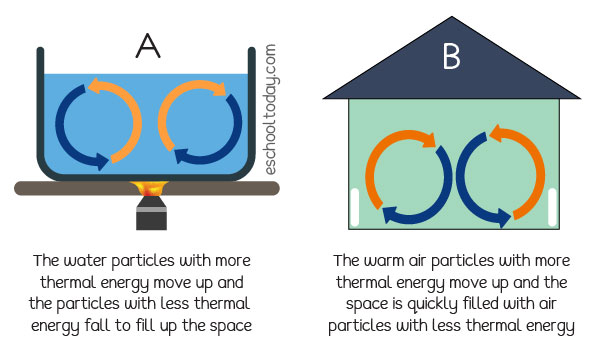- Kinds of energy
Heat transfer by Convection
Unlike in metals, particles in liquids and gases are loose and move from place to place (it is important to note that). When the particles in liquids and gases get warm, they become less dense, take up more space (because the particles move more freely but stay the same in size) and they rise. The vacuum is quickly replaced by cooler particles that are denser (because they are heavier). Thermal energy is transferred from hot places to cold places (air or liquid) by convection.
Here is an example of convection in (A) liquid and (B) gas:

Did you know…
Winds and air pressure systems such as hurricanes and tropical storms are formed by convection. When the ocean surfaces are heated up by the sun, warm air with moisture over the water surface rise, and cooler dense air fall to fill up the vacuum. This convection process sets off winds and storms.
